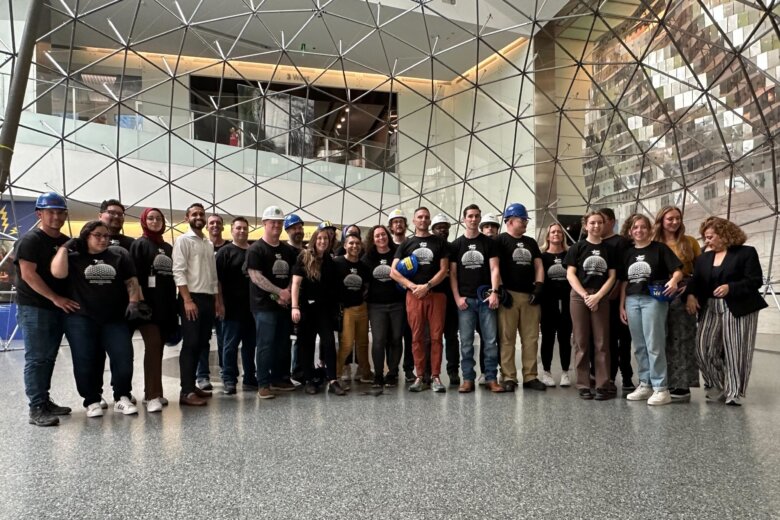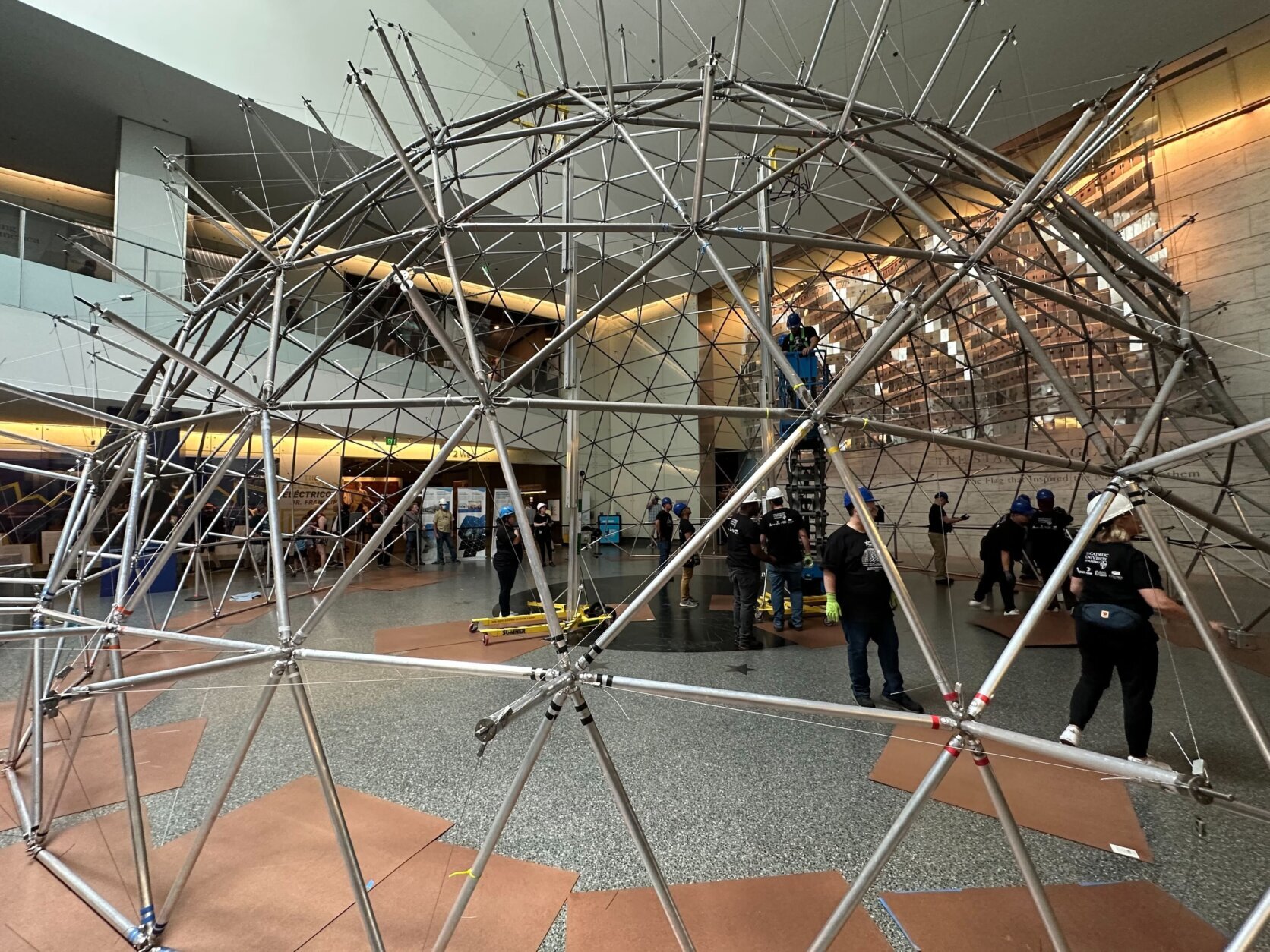
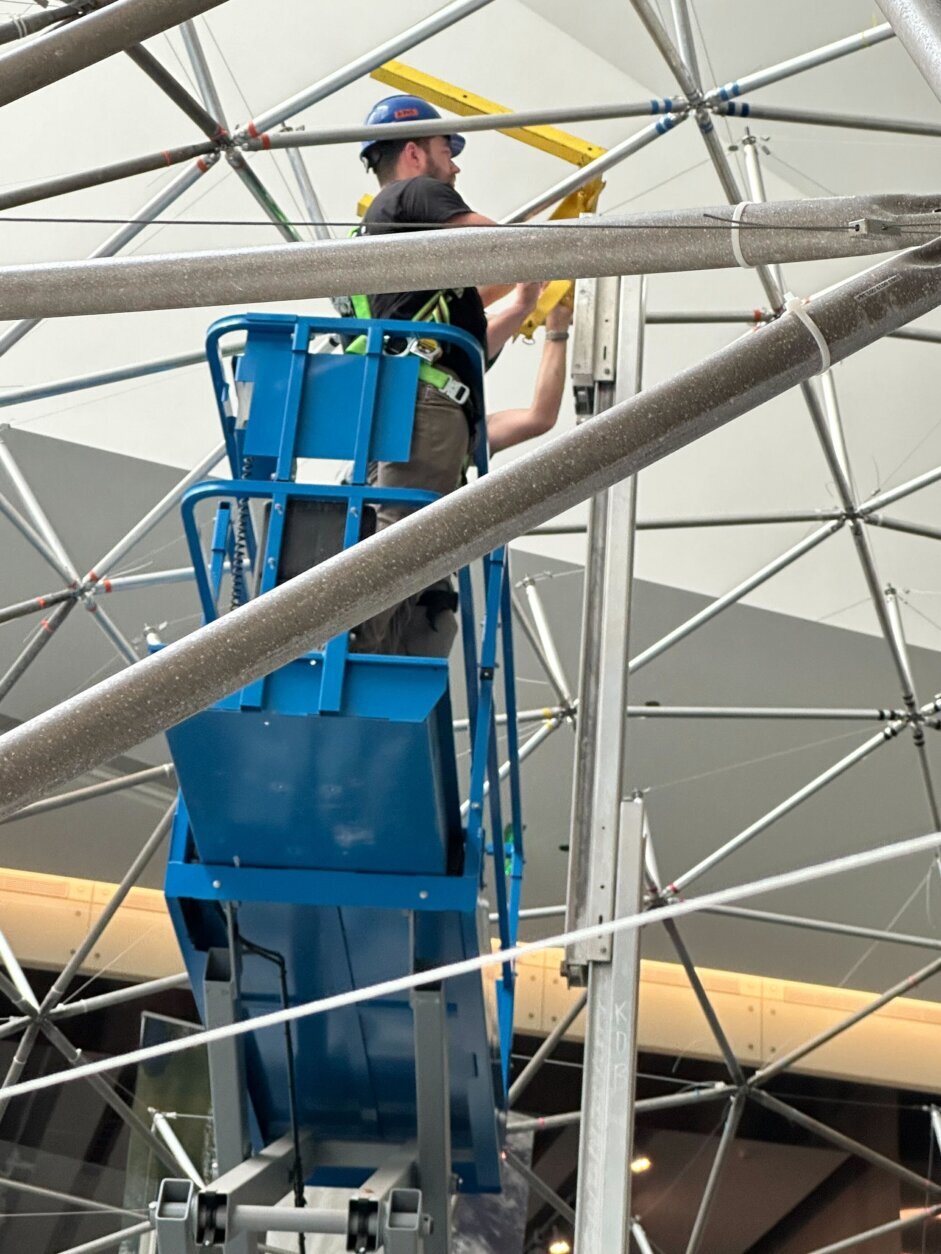
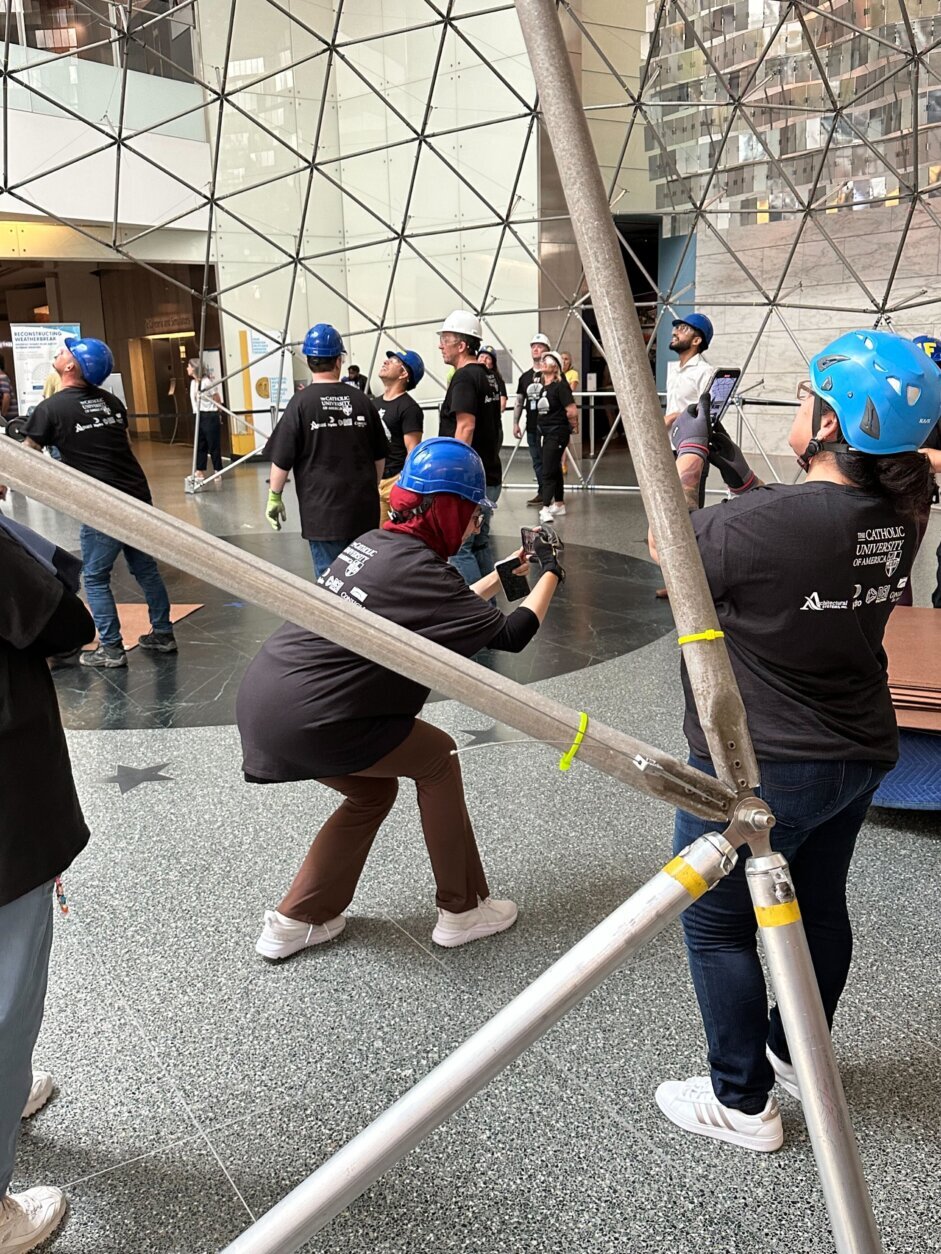
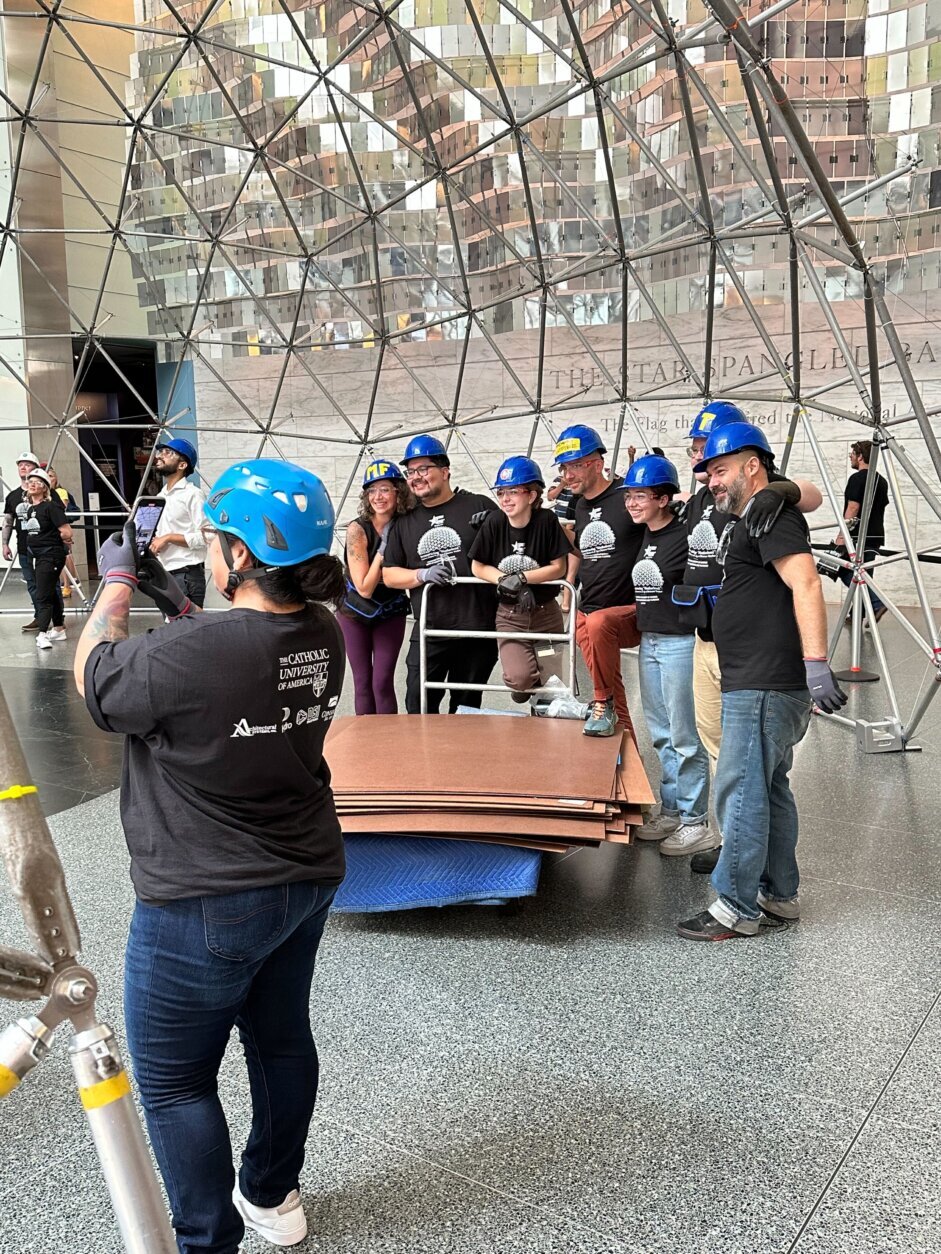
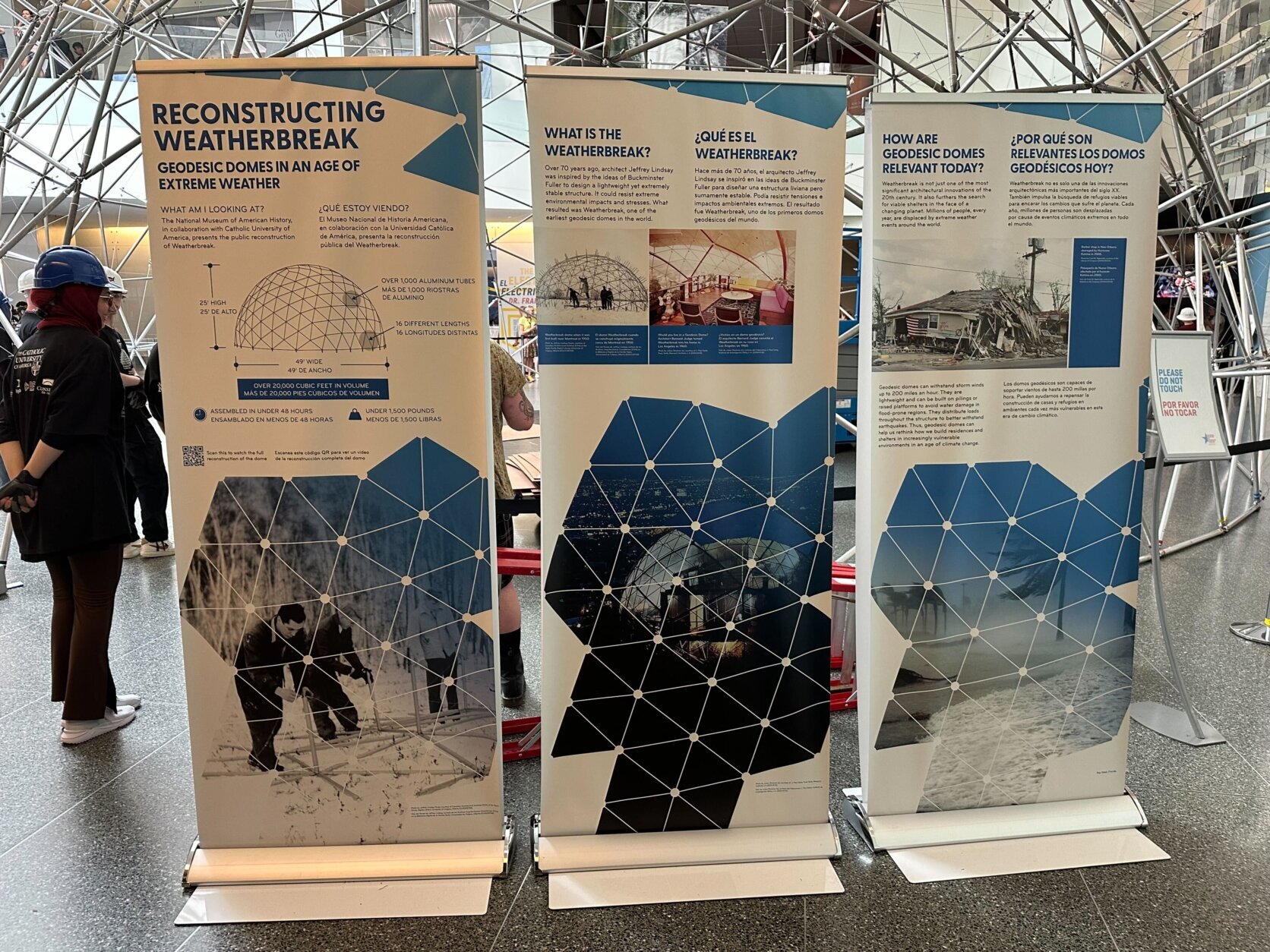
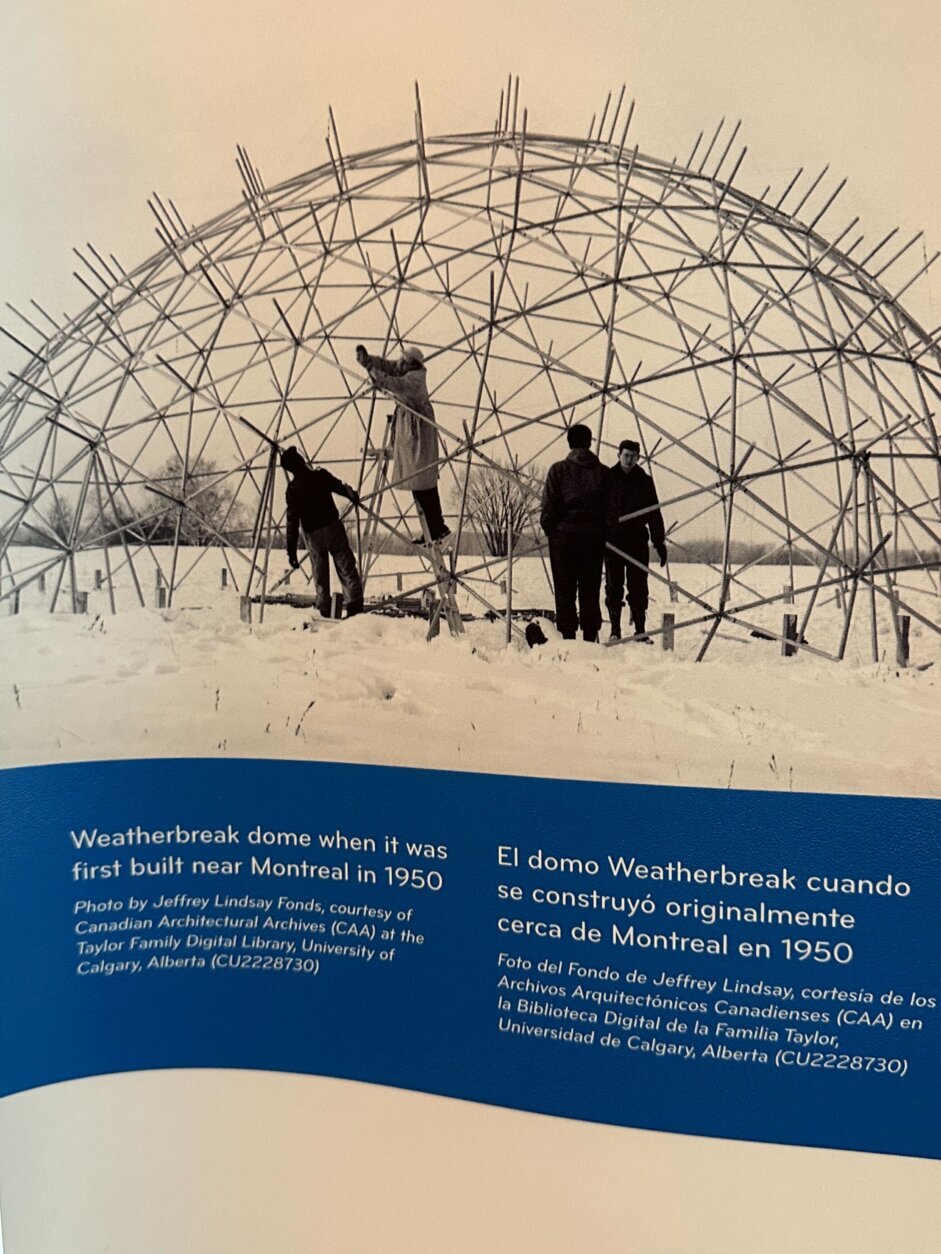
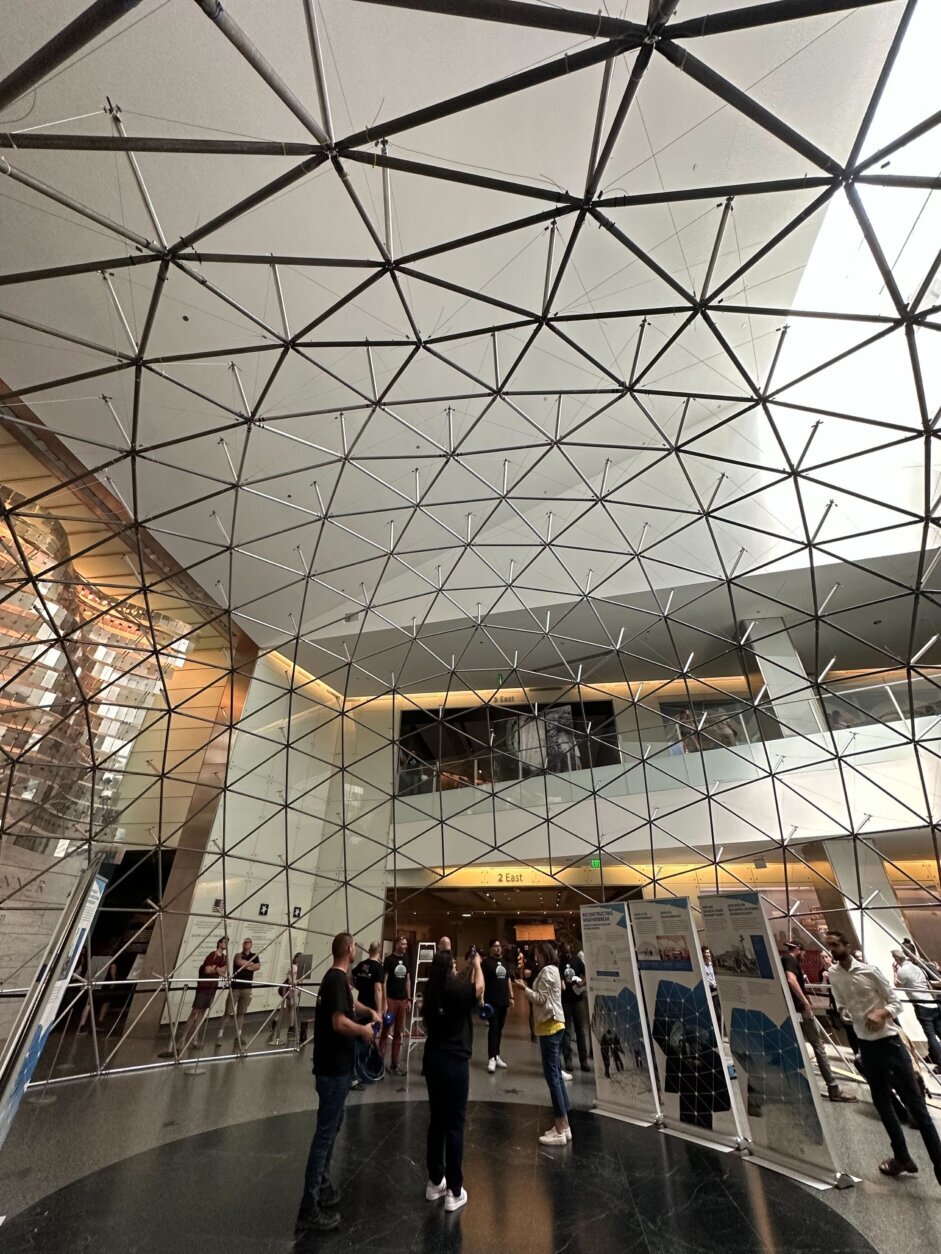
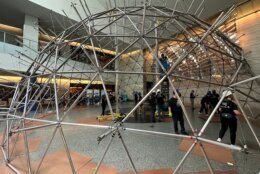
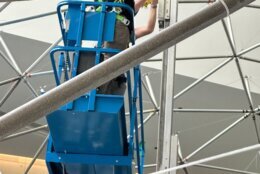
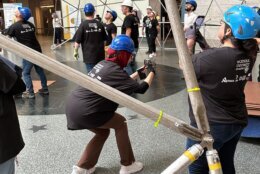
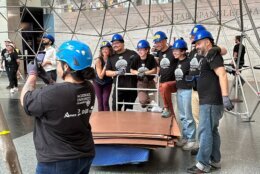
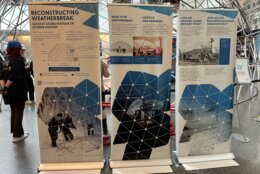
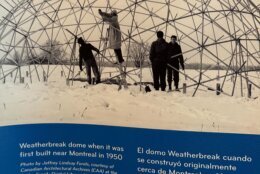
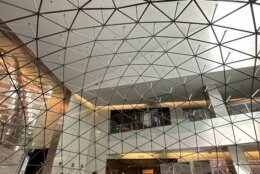
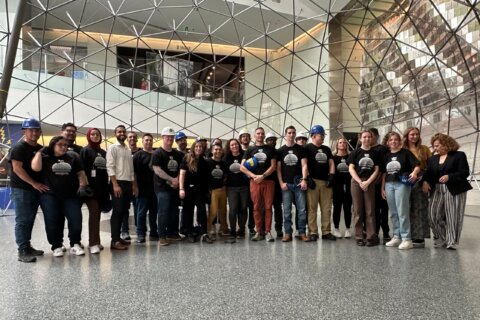
Could you imagine having your home be sphere-shaped in the future? What about living in a dome? A new exhibit at the Museum of American History suggests it’s definitely a possibility.
“This particular object can help us design and thrive in future shelters, in future domiciles, in ways people haven’t imagined before,” said Abeer Saha, a curator with the museum.
Saha is referring to the reconstruction of a historic weather dome from the 1950s, which the museum put the finishing touches on Friday, in partnership with Catholic University.
The dome is called Weatherbreak, and is what’s known as a geodesic dome, characterized by a triangular lattice framework, which enables it to redisperse the force it absorbs from phenomena like extreme weather.
This video is no longer available.
“Weatherbreak, when it was built, was the first of its kind,” Saha said, explaining that the original iteration of the dome — erected in Montreal in 1950 — was designed to withstand snow and heavy wind. It was later reconstructed in the Hollywood Hills in the 1960s, and came to the Smithsonian in the 1970s. This is the first time in 40 years it’s being rebuilt.
The reconstruction of Weatherbreak, which wrapped up Friday at the Museum of American History, was an all-hands-on-deck three-day build in the museum’s Flag Hall. The dome is made of over 1,000 aluminum struts and sprits, standing 25 feet high and measuring 50 feet wide.
“Weatherbreak can withstand winds of up to 200 miles per hour,” Saha told WTOP when asked what kind of force it could take. “That’s more than a Category 5 hurricane,” he said.
“We at the museum really want to find ways in which the past can speak to the present and the future,” Saha explained, adding that the irony of navigating the future of extreme weather means taking a trip back into the past.
Both Saha and Assistant Professor of Architecture Wyly Brown said they expect structures built in the style of Weatherbreak to become more common as extreme weather events become more frequent — and larger — with the damage toll they inflict (both in terms of human lives lost and money spent on repairs) continuing to increase.
“I do think shell structures, and lightweight structures, are going to become more prevalent,” said Brown, who works at Washington University in St. Louis. He’s also an architect and was involved in the construction of Weatherbreak.
“[They’re going to become more common] because of the minimal use of materials and the fact that their geometries allow them to be much stronger,” Brown said. “I think we’ll also probably see more being made of bamboo and other sustainable materials. That’s where my field of research is in.”
He says the idea of a structure like Weatherbreak becoming a house is something that could happen “way down the line,” but for other types of structures, like greenhouses and storm shelters, the future is now.
“We have one of the most significant architectural innovations of the 20th century, and it’s an object that [helps] us look towards a brighter future in this time of extreme weather and climate change,” Saha said.
Guests at the museum will be able to walk through and learn more about Weatherbreak from the inside starting on Saturday, July 8.

